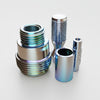Titanium Price Vs Grade And Form: Spot The Real Market Premiums
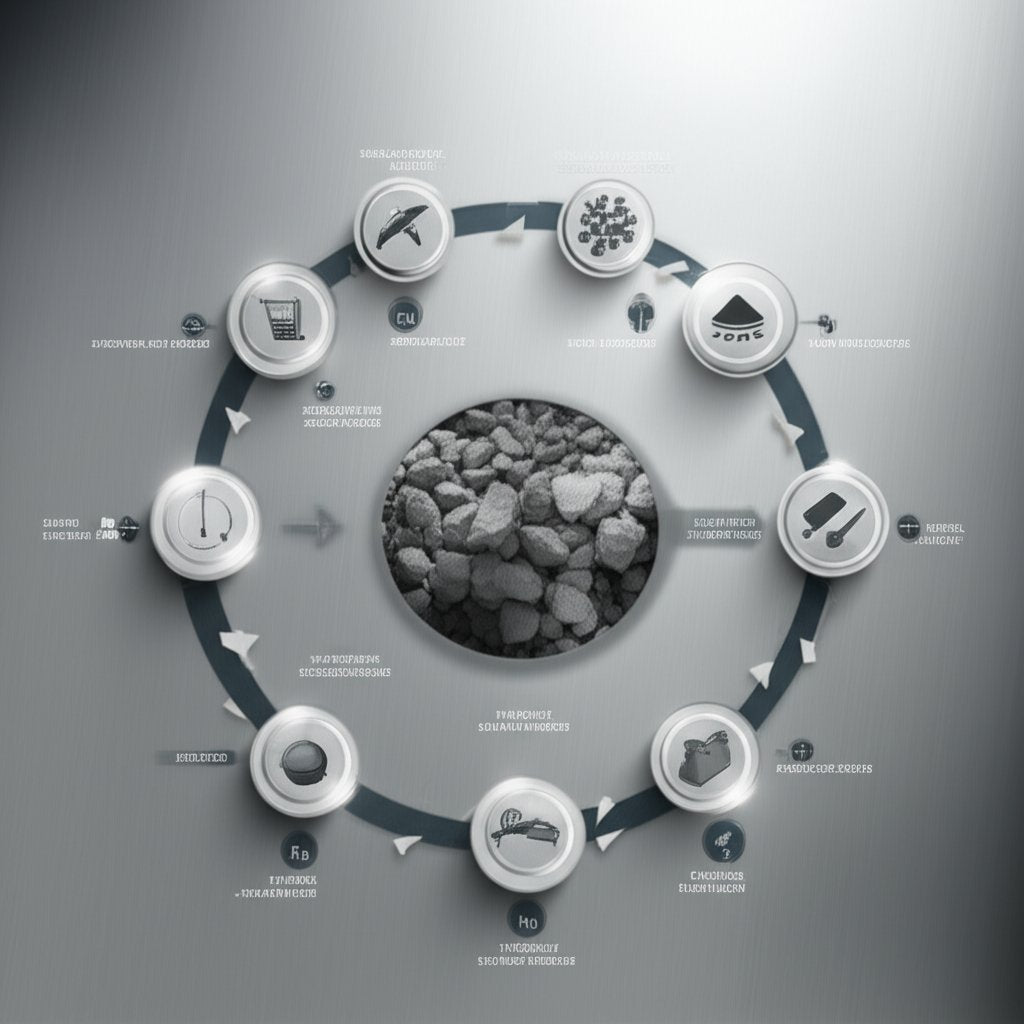
Make sense of titanium price
What Titanium Price Actually Refers To
Ever wondered why the titanium price you see online or in a quote can be wildly different from another source? Or why one supplier’s price of titanium seems too good to be true? The answer is simple: “titanium price” is not a single, universal number. Instead, it’s a system of prices that reflect the grade, form, region, and unit of the titanium being sold.
When people talk about titanium cost, they might be referring to:
- Ore: The raw mineral concentrate, usually priced per metric ton.
- Sponge: The porous, metallic form produced after initial processing, often quoted per kilogram or pound.
- Ingot: Bulk, melted titanium ready for further processing, typically per kilogram or pound.
- Mill products: Finished shapes like bar, plate, sheet, wire—quoted per pound or kilogram.
- Powder: Fine titanium for additive manufacturing, usually per kilogram or pound.
- Scrap: Recycled titanium, often per pound or ton, with significant discounts for contamination or mixed grades.
Each of these forms has its own market, supply chain, and pricing logic. For example, the price on titanium sponge reflects extraction and purification costs, while titanium sheet or bar prices include further processing and certification costs. It’s crucial to identify which stage you’re looking at before comparing numbers.
Units Matter: Per Ounce vs Per Pound vs Per Kg
Sounds complex? It gets trickier. Titanium is quoted in several units—per ounce, per pound, per kilogram, or even per metric ton—depending on the region and product form. A misunderstanding here can easily lead to costly mistakes. For instance, a titanium price per ounce might appear low, but if you’re buying in bulk, you’ll need to convert to pounds or kilograms for a fair comparison.
Why Two Quotes Can Differ For The Same Metal
Imagine two suppliers offering titanium at different prices. What’s going on? Several factors can explain this:
- Grade and Purity: Higher grade and purity command higher prices.
- Form: Processed shapes (sheet, bar, powder) include conversion costs.
- Region and Logistics: Local market demand, tariffs, and shipping costs all play a role.
- Certification and Testing: Aerospace or medical grades require costly testing and documentation.
- Currency Fluctuations: International trade means exchange rates can shift the price you pay.
| Term | Typical Meaning | Unit Quoted | Common Pitfalls |
|---|---|---|---|
| Titanium Ore | Raw mineral concentrate (ilmenite/rutile) | Metric ton | Not directly comparable to metal price; low purity |
| Titanium Sponge | Purified, porous metal | Kg, Pound | May not include all processing costs; purity varies |
| Titanium Ingot | Melted, bulk metal | Kg, Pound | Bulk form, not ready for machining or fabrication |
| Mill Product | Bar, plate, sheet, wire, tube | Pound, Kg | Includes conversion, may include certification |
| Powder | Fine, atomized titanium | Kg, Pound | Specialty use; much higher cost per unit |
| Scrap | Recycled titanium (varied forms) | Pound, Ton | Quality, contamination, and grade mix affect price |
Key takeaway: Unless you know the grade, form, region, and unit of a titanium price, you can’t make a true comparison. Always clarify these details before acting on any quote.
So, whether you’re a buyer seeking a normalized titanium cost or a seller setting realistic expectations, treat titanium pricing as a system—not a single number. The rest of this article will guide you through the titanium value chain, conversion and normalization tactics, grade and form price differentials, key market drivers, interpreting data sources, recycling economics, procurement best practices, and a practical wrap-up.
Ready to spot the real market premiums? Let’s get started.

Value chain map that sets real price baselines
From Ore To Mill Products: The Journey of Titanium Pricing
Ever wonder why the titanium metal price can swing so widely between suppliers, or why the price of titanium metal seems to change as it moves through the supply chain? The answer lies in the value chain—a series of steps that transform raw ore into the high-performance products used in aerospace, medical, and industrial applications. Each stage adds value, cost, and margin, shaping the final titanium pricing you see on a quote.
Where Price Signals Originate
The titanium value chain is more than a straight line; it’s a system where each segment has its own market and cost structure. Let’s break down the typical stages:
| Stage | Typical Unit | Price Basis | Key Drivers | Common Misinterpretations |
|---|---|---|---|---|
| Ore (Ilmenite, Rutile) | Ton (metric) | Contract/Spot | Mining costs, ore quality, logistics, global demand | Not directly comparable to metal; low purity |
| Slag / Upgraded Ore | Ton | Contract | Upgrading yield, energy, transportation | Still not metal; further processing needed |
| Titanium Tetrachloride (TiCl4) | Ton | Contract | Chlorination energy, plant capacity | Intermediate, not a final product |
| Sponge | Kg, Pound | Spot/Contract | Kroll process energy, magnesium price, purity | May not include conversion losses or finishing |
| Ingot | Kg, Pound | Spot/Contract | Melting cost, alloying, scrap input, energy | Not yet in usable shapes; bulk form |
| Mill Products (Bar/Plate/Sheet) | Kg, Pound | Spot/Contract | Rolling/forging, machining, certification, demand (aerospace/medical) | Includes conversion and finishing costs |
| Powder | Kg, Pound | Spot | Atomization, purity, additive manufacturing growth | High cost/unit; specialty market |
| Scrap | Pound, Ton | Spot | Scrap quality, contamination, recycling efficiency | Value depends on segregation and cleanliness |
How Processing Steps Add Value
Sounds complicated? Let’s simplify the journey with a step-by-step outline. Each step below represents a value-adding process, and each one affects the titanium rate you’ll see at the end:
- Ore Mining and Upgrading: Extract ilmenite/rutile, then upgrade to higher TiO2 content (slag).
- Chlorination to TiCl4: Convert ore to titanium tetrachloride using chlorine and energy-intensive processes.
- Sponge Production: Reduce TiCl4 with magnesium (Kroll process) to produce titanium sponge.
- Melting to Ingot: Melt sponge (often with recycled scrap) to form bulk ingots, sometimes alloyed for specific properties.
- Conversion to Mill Shapes: Roll, forge, or extrude ingots into bars, plates, sheets, or wire—each with its own cost structure and market.
- Final Machining or Powder Production: Mill shapes are further processed or atomized into powder for advanced manufacturing.
You’ll notice that each stage requires significant energy, specialized equipment, and sometimes scarce raw materials. For example, the Kroll process (step 3) is energy-hungry and sensitive to magnesium and chlorine prices, which can swing the cost of sponge and, eventually, the titanium metal price you pay downstream.
Why Regional and Processing Differences Matter
Imagine two titanium mills: one in a region with cheap electricity and efficient logistics, another where energy is costly and transport is slow. Even if they start with the same ore, the finished titanium pricing will diverge sharply by the time it reaches you. That’s why regional energy costs, carbon emissions regulations, and logistics bottlenecks all influence the final price of titanium metal (reference).
Key insight: Raw titanium ore and finished titanium bar or sheet are not directly comparable in price. Always account for conversion losses, processing costs, and yield when evaluating titanium rate across the value chain.
Understanding this value chain helps you spot where real market premiums are created—and where hidden costs might lurk. Next, we’ll show you how to normalize units and currencies so you can compare quotes on a true apples-to-apples basis.
Normalize units and currencies the smart way
Unit Conversion Without Confusion
Ever compared two titanium quotes and wondered, “Why does one look so much cheaper per ounce?” It’s easy to get tripped up by the units—especially when the titanium price per ounce, titanium price per pound, and titanium price per kg all appear in different places. To make an apples-to-apples comparison, you need to standardize units before anything else.
Here’s a quick reference table to keep your conversions straight:
| Unit | Conversion Relationship |
|---|---|
| Ounce (oz) | 16 oz = 1 lb; 35.274 oz ≈ 1 kg |
| Pound (lb) | 1 lb = 16 oz; 1 lb ≈ 0.4536 kg |
| Kilogram (kg) | 1 kg ≈ 2.2046 lb; 1 kg ≈ 35.274 oz |
| Gram (g) | 1 g = 0.001 kg; 1 kg = 1000 g |
For example, if you see a titanium cost per ounce and want to compare it to a titanium price per pound, you’ll need to multiply the per-ounce figure by 16. Similarly, for titanium price per kg, multiply the per-pound price by 2.2046. This step is crucial, as even small errors in unit conversion can lead to big mistakes in your actual titanium cost.
Currency and Incoterms Normalization
Let’s say you’ve standardized the units. What next? Currency and Incoterms can still skew your comparison. Titanium is traded globally, so a price of titanium per oz quoted in USD might not match a per-kg price in EUR or CNY. Always convert currencies using the same day’s exchange rate, and note that fluctuations can impact the final price you pay.
Incoterms—like EXW (Ex Works), FOB (Free On Board), and CIF (Cost, Insurance, and Freight)—define who pays for shipping, insurance, and customs. A lower titanium cost per pound with EXW terms might actually be more expensive than a higher FOB quote once you factor in logistics and risk.
Apples to Apples Quote Comparison
Ready to compare quotes with confidence? Follow this step-by-step checklist:
- Standardize Unit: Choose a base unit (usually lb or kg) and convert all quotes accordingly.
- Convert Currency: Use the same day’s exchange rate to bring all prices to a single currency.
- Align Incoterms: Adjust for shipping, insurance, and customs to get the true delivered cost.
- Include Scrap/Yield Loss: If you’re comparing raw to finished forms, account for material lost during machining or conversion.
- Add Lead Time and MOQ: Document any differences in minimum order quantity and delivery time.
- Document Grade and Specification: Record the exact grade, alloy, and required certifications.
To keep track of what drives price differences, use a quote metadata table like this:
| Quote Attribute | Typical Options/Notes |
|---|---|
| Supplier Region | USA, EU, China, etc. |
| Grade/Alloy | CP, Ti-6Al-4V, custom |
| Heat Treatment | Annealed, solution treated, etc. |
| Tolerances | Standard, tight, custom |
| Surface Finish | Mill, polished, coated |
| Test Certificates | Mill test report, 3.1, 3.2, etc. |
Key insight: A low titanium price per ounce can end up being more expensive after you factor in currency conversion, freight, and yield loss. Always lock unit precision and clarify the measurement basis before comparing any titanium quote.
By applying these normalization steps, you’ll see past the surface and spot the true value in each quote—avoiding costly surprises and ensuring your titanium sourcing is both fair and transparent. Up next, we’ll dive into how grade and product form drive price differences, so you can avoid overpaying for specs you don’t need.
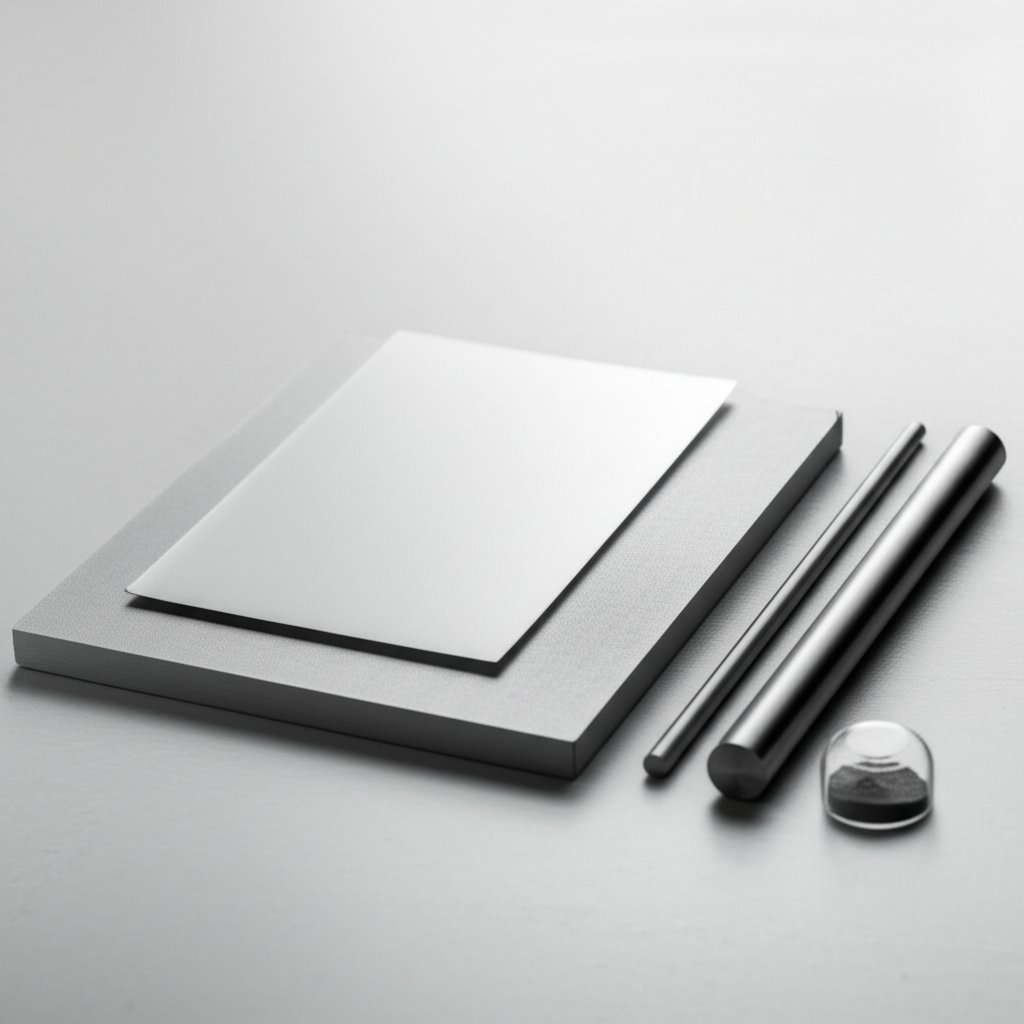
Grades and forms that move the price needle
Commercially Pure vs Alloyed Titanium: How Grade Sets the Baseline
When you shop for titanium, the first question to ask is: what grade do you need? The answer can swing your titanium material cost dramatically. Commercially pure (CP) grades, like Grade 1 and Grade 2, are unalloyed and prized for their ductility and corrosion resistance. These are often used in chemical processing, marine environments, and applications where formability trumps strength. Their price of titanium per kg is usually lower than alloyed grades, making them attractive for general industrial use.
In contrast, alloyed grades—most notably Grade 5 (Ti-6Al-4V)—contain elements like aluminum and vanadium, boosting strength and heat resistance. These grades are essential for aerospace, medical implants, and high-performance automotive parts, but they come with a higher titanium price kg due to more complex processing and tighter quality controls.
Sheet, Plate, Bar, Tube, Powder: Why Form Matters
Ever wondered why titanium sheet cost is different from titanium plate, bar, or powder? It’s all about manufacturing complexity and end-use requirements. Here’s a simplified comparison:
| Form | Typical Price Level | Complexity | Common Applications | Certification Intensity |
|---|---|---|---|---|
| CP Sheet (Grade 1/2) | Lower | Basic rolling, good formability | Chemical processing, marine, general industrial | Low to moderate |
| CP Plate (Grade 1/2) | Moderate | Thicker, more rolling/finishing | Pressure vessels, shipbuilding, reactors | Moderate |
| Alloy Plate (Grade 5, etc.) | High | Advanced rolling, heat treatment | Aerospace structures, medical implants | High (traceability, testing) |
| Bar/Rod | Moderate to high | Forging, tight diameter control | Fasteners, shafts, medical devices | Moderate to high |
| Tube | Moderate to high | Seamless or welded, strict tolerances | Heat exchangers, medical, aerospace | Moderate to high |
| Powder | Highest | Atomization, purity critical | Additive manufacturing, specialty aerospace | Very high |
As you can see, titanium sheet metal is generally more affordable than powder or aerospace-grade plate, but even within sheets, the grade and thickness will impact the final price of titanium per kg. For example, Grade 5 titanium sheet is significantly more expensive than Grade 1 or 2, due to both alloy content and the extra processing required.
Tolerance and Test Cost Adders: The Hidden Premiums
Think the cost of titanium per pound is the only thing you need to compare? Not quite. Buyers often overlook the impact of tolerances, finishing, and certification—factors that can add up quickly, especially for safety-critical or regulated industries. Here are some key price drivers:
- Tight thickness tolerance (especially for aerospace or medical use)
- Flatness and straightness requirements
- Surface finish (Ra) specifications
- NDT (non-destructive testing) or mechanical property testing
- Full traceability and batch certification
- Small-batch minimum order quantities (MOQs)
For instance, a titanium plate supplied for an aircraft will often be subject to multiple tests and certifications, each adding to the titanium material cost. In contrast, a general-purpose titanium sheet metal for industrial use may only require basic mill certification, keeping costs lower.
Remember: The price of titanium per pound or per kg is just the starting point. Always ask for a detailed quote that includes all conversion, finishing, and certification steps to see the true cost of your titanium product.
Understanding these grade and form differences will help you avoid overpaying for features you don’t need—or missing critical specs that could cost far more down the line. Next, we’ll explore the market forces that push titanium prices up or down, so you can time your purchases wisely.
What really drives market moves
Energy and Feedstock Costs: The Foundation of Titanium Pricing
When you check the titanium price today, do you ever wonder what’s really behind the latest numbers? Imagine a supply chain where every step—from mining to sponge production to final machining—relies on energy, raw materials, and specialized processes. The cost of electricity, chlorine, and magnesium (especially for the Kroll process) forms the backbone of titanium production costs. If energy prices surge or there’s a disruption in feedstock supply, the current price of titanium can climb quickly across global markets (source).
- Electricity and chlorine costs for sponge production
- Raw material prices (ilmenite/rutile ore, magnesium)
- Energy intensity of smelting and melting steps
- Upgrades in processing technology that can reduce or increase costs
When energy costs rise—whether due to local shortages, global fuel markets, or environmental regulations—those increases ripple through to the titanium prices you see in spot markets and contracts alike.
Tariffs, Sanctions, and Export Controls: Policy Shocks and Regional Price Gaps
Ever notice how the price of titanium today can differ sharply from one region to another? That’s often the result of trade policy. Tariffs, duties, sanctions, and export controls can all disrupt supply chains, restrict the flow of raw materials, and create regional bottlenecks. For example, if a major titanium-producing country faces export restrictions, downstream users in other regions may see the titanium current price spike due to limited supply.
- Tariffs and duties on titanium products and raw materials
- Sanctions limiting exports from key producing countries
- Export controls on strategic alloys or finished products
- Currency fluctuations impacting import parity and cost competitiveness
These policy-driven frictions add layers of risk and unpredictability, often making titanium prices today more volatile and less predictable than other industrial metals.
Aerospace, Medical, and Industrial Demand: The Pull of End-Use Markets
Imagine demand for new aircraft ramping up, or hospitals increasing procurement of medical implants. Aerospace remains the single largest consumer of titanium, with commercial and military aircraft programs driving sustained demand. Medical and energy sectors are not far behind—joint replacements, cardiovascular stents, and renewable energy infrastructure all depend on titanium’s unique properties (source).
- Aerospace build rates (commercial, military, and space vehicles)
- Medical implant standards and increased healthcare interventions
- Infrastructure and energy projects (renewables, nuclear, oil & gas)
- Industrial maintenance cycles in chemical, marine, and construction sectors
When these sectors accelerate, the titanium prices tend to rise, reflecting strong demand and, sometimes, tight supply. Conversely, slowdowns in aerospace or medical spending can ease price pressure, but supply constraints or policy changes may still keep the market tight.
Regional Lens: Why Titanium Price Today Isn’t the Same Everywhere
It’s easy to assume that the current price of titanium is the same worldwide. In reality, regional differences in energy costs, labor, logistics, and regulatory overhead can create substantial price gaps. Here’s a qualitative comparison of how these factors play out across major regions:
| Region | Energy Exposure | Logistics Complexity | Regulatory Overhead |
|---|---|---|---|
| US | Moderate to high (regional grid differences) | Efficient, but import-dependent for some feedstocks | Strict environmental and quality standards |
| EU | High (energy transition, carbon costs) | Complex cross-border logistics, strong infrastructure | Very high (environmental, labor, trade policy) |
| China | Variable (depends on region and plant efficiency) | Growing domestic supply chain, export controls | Increasingly strict, but often less costly than EU/US |
| India | Moderate (developing grid, local resources) | Developing infrastructure, some export focus | Moderate (environmental and labor evolving) |
This table illustrates why the titanium price today can be shaped as much by local conditions as by global supply and demand.
Key takeaway: The current price of titanium is rarely a simple commodity number. Instead, it’s a moving target shaped by supply constraints, policy friction, and end-use market momentum. To truly understand titanium prices, you must track not only global trends, but also regional dynamics and sector-specific demand.
As you follow market shifts, keep these drivers in mind. Next, we’ll show you how to interpret titanium price charts and indexes, so you can separate noise from actionable signals in your purchasing decisions.
Read spot charts and PPI without getting misled
Spot Quotes vs Producer Price Index: What Are You Really Seeing?
Ever looked at a titanium spot price chart and wondered, "Is this the number I’ll actually pay?" Or maybe you’ve seen the Producer Price Index (PPI) for titanium and thought it was the definitive answer. The reality: each data source tells a different story, and understanding their differences is crucial for making informed decisions about titanium price oz or any other unit.
| Data Type | What It Measures | Time Sensitivity | Strengths | Limitations |
|---|---|---|---|---|
| Spot Price | Recent, short-term transaction values (often at major ports or for bulk lots) | High (can change daily or weekly) | Reflects current market mood and supply/demand shocks | Volatile, may not match contract or specialty grades; not always public |
| Producer Price Index (PPI) | Average change over time in domestic selling prices for titanium mill shapes | Moderate (monthly or quarterly updates) | Shows underlying structural trends, less noise | Lags real-time market moves; may not capture specialty alloys or urgent surges |
| Transaction Surveys | Aggregated prices from actual deals (often via industry intel services) | Low to moderate (published with a delay) | Most representative of realized prices, includes contract nuances | Time lag, may blend different grades/forms; access often restricted |
Using Historical Trends Without Overfitting
When you’re tracking titanium prices per ounce or by other units, it’s tempting to use historical charts for forecasting. But past performance doesn’t always predict the future. Spot price titanium charts can swing sharply due to supply disruptions, policy changes, or sudden demand spikes. Meanwhile, the PPI tends to move more gradually, reflecting broader industry forces (source).
To avoid drawing the wrong conclusions, always check how recent the data is and whether it matches your product form and grade. For example, a spike in the spot price for titanium sponge may not immediately affect the PPI for titanium mill products, but the impact could filter through over time.
Blending Multiple Signals For Decisions
So, how do you put these signals together for smarter purchasing? Use this workflow to cut through the noise:
- Check Spot Charts: Look for the direction and volatility in the latest titanium spot price data.
- Cross-Reference with PPI: Compare spot movements with the PPI or mill-shape indexes to gauge structural pricing trends.
- Validate Against Transaction Ranges: If available, review actual transaction surveys for your region, grade, or form.
- Adjust for Grade/Form: Remember, titanium price oz for a high-purity alloy can differ sharply from commodity-grade material.
- Layer in Freight and Currency: Add logistics, currency conversions, and Incoterm differences to get your true landed cost.
By following this process, you’ll avoid common pitfalls—like overpaying based on a lagging index or missing a market softening signaled by spot prices. For example, if you see titanium prices per ounce dropping on spot markets but the PPI remains flat, it could be an early signal of future softening in contract pricing.
Key insight: The Producer Price Index (PPI) often lags behind real-time spot price shifts. To avoid paying a premium when markets soften, monitor both spot and index data—and always document the date, source, and grade for every quote. Mixing old and new price data can lead to costly mistakes.
Next up, we’ll dive into the recycling and scrap side of the market—where understanding the difference between published prices and what you actually receive can make all the difference in maximizing value.
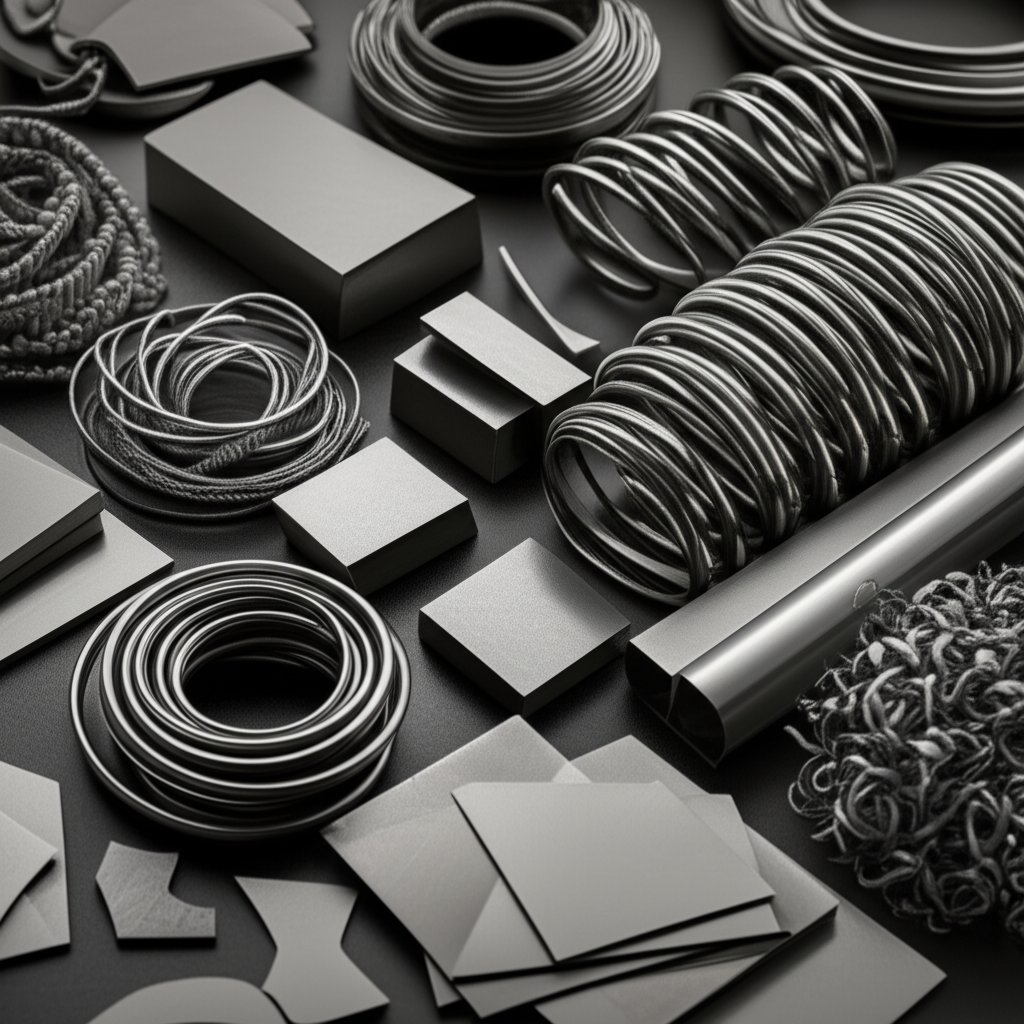
Scrap and recycling economics you can act on
Scrap Categories and Alloy Mix: Know What You Have
When you’re ready to turn leftover titanium into cash, the first question is: what kind of scrap are you selling? Sounds simple, but the answer can make a big difference in your titanium scrap price. Dealers and recyclers typically recognize several main categories, each with its own market and requirements:
- Turnings: Spiral-shaped offcuts from machining, often mixed with cutting oils or coolants.
- Solids: Large, uniform pieces like bars, rods, or blocks—usually cleaner and more valuable.
- Plate Drops / Sheet Scrap: Flat, leftover pieces from cutting or shaping titanium sheets and plates.
- Shavings: Fine, powdery scrap from grinding or cutting—higher contamination risk.
- Aerospace, Medical, or Industrial Grade: Scrap sorted by its original application and alloy family (e.g., Grade 5, CP, or specialty alloys).
Each type has its own handling needs and market value. For example, clean plate drops from aerospace manufacturing may command a premium, while oily turnings might be discounted due to cleaning costs. Understanding your scrap’s grade and form is the first step toward maximizing titanium scrap value.
Contamination Killers of Value: What to Watch For
Imagine you’ve sorted a load of titanium, only to be told it’s worth less due to contamination. What went wrong? In the world of titanium scrap metal prices, cleanliness and segregation are everything. Here are common value killers:
- Ferrous Contamination: Steel or iron mixed in, often from tools or embedded fasteners.
- Non-Titanium Metals: Aluminum, copper, or other metals mixed with the load.
- Oils and Coolants: Residues from machining operations, especially in turnings or shavings.
- Paints, Coatings, or Plastics: Surface treatments or attachments that require extra processing.
Even small amounts of contamination can depress your scrap titanium price or, in some cases, make the load unfit for recycling. That’s why top recyclers invest in sorting, cleaning, and advanced identification techniques like X-ray fluorescence (XRF) to ensure purity (reference).
How to Prepare Loads for Best Offers: A Seller’s Checklist
Want to get the best titanium scrap metal prices? Preparation is key. Here’s a simple process to help you maximize your payout and avoid common pitfalls:
- Sort by Alloy Family: Separate titanium by grade (e.g., CP, Ti-6Al-4V) and application (aerospace, medical, industrial).
- Remove Contaminants: Clean off oils, coolants, embedded fasteners, and any non-titanium materials.
- Document Known Grades: Provide certificates, labels, or documentation if available—this builds buyer confidence.
- Weigh and Photograph Loads: Accurate weights and clear photos help buyers assess value remotely.
- Request Written Bids: Always ask for formal offers with unit pricing, terms, and payment details clearly stated.
Following these steps not only boosts the price of scrap titanium but can also speed up the sales process and reduce disputes.
| Scrap Type | Typical Form | Risk Factors | Documentation Needed |
|---|---|---|---|
| Turnings | Spiral chips, mixed with oils | High oil/coolant content, mixed alloys | Grade labels, cleaning records |
| Solids | Bars, rods, blocks | Embedded fasteners, coatings | Mill certs, alloy documentation |
| Plate Drops/Sheet | Flat, cut pieces | Surface contamination, mixed grades | Cutting records, grade IDs |
| Shavings | Fine, powdery scrap | Mixed metals, high contamination | Machining logs, cleaning info |
| Aerospace/Medical | Certified scrap, often labeled | Paints, coatings, strict traceability | Certifications, usage history |
Key reminder: The titanium scrap price and titanium scrap value you receive depend on clean segregation, documentation, and contamination control. Online price of scrap titanium listings often assume loads are free of oil and foreign metals—so always clarify your material’s condition before comparing offers.
Finally, don’t settle for the first quote you receive. Shop multiple bids, standardize your terms, and be ready to answer questions about alloy, grade, and cleanliness. Only then can you be confident you’re getting a fair scrap titanium price in today’s market. Next, we’ll explore how to use procurement tactics to further reduce your total titanium cost, whether you’re buying raw stock or finished parts.
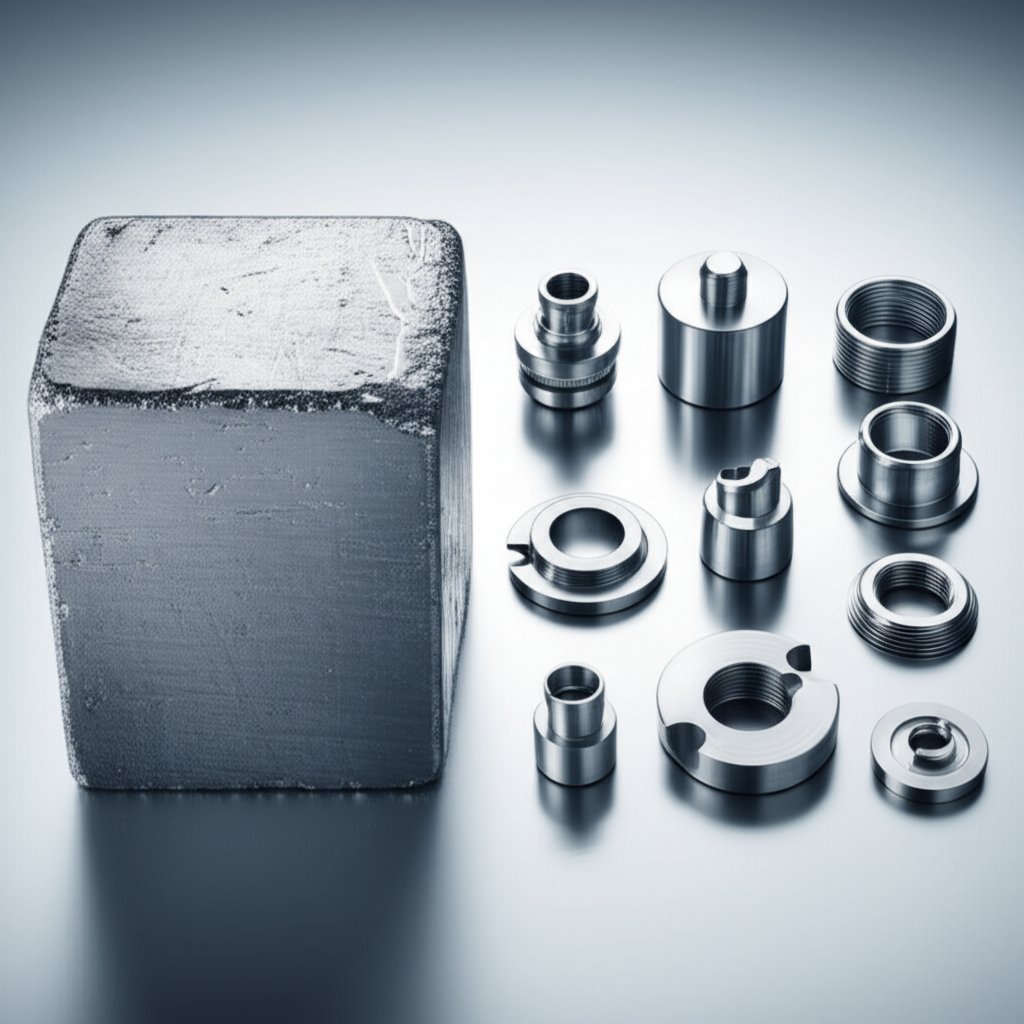
Buying titanium and parts without overpaying
Quote Like a Pro: Steps for Smarter Titanium Sourcing
When you’re tasked with buying titanium—whether raw stock or finished components—the first question is often, “How much does titanium cost?” But as you’ve seen, the answer depends on more than just the headline number. To avoid surprises and get the most value, follow this step-by-step playbook:
- Define Grade and Specification: Specify exact titanium grade (e.g., Grade 2, Ti-6Al-4V), alloy requirements, and intended application. This ensures suppliers provide relevant quotes and avoids costly mismatches.
- Choose Form and Tolerances: Decide if you need sheet, plate, bar, or a finished part. Set tolerance, surface finish, and certification needs upfront.
- Request Dual Quotes: Get pricing for both your first-choice and a suitable alternate (e.g., different grade or form) to benchmark cost and flexibility.
- Align Incoterms: Make sure all suppliers quote on the same delivery basis (EXW, FOB, CIF) for a true cost comparison.
- Verify Quality Documents: Ask for mill test certificates, compliance with ASTM/ISO standards, and any required traceability.
- Set Inspection and Acceptance Rules: Define how goods will be inspected and what happens if they don’t meet spec. This reduces risk and disputes.
By making these steps routine, you’ll not only understand how much is a pound of titanium in your context, but also minimize risk and avoid hidden costs.
MOQ, Lead Time, and Certification: What to Watch For
Minimum order quantity (MOQ), lead time, and certification requirements can swing titanium procurement costs by a wide margin. For instance, a low price per pound may require a large MOQ or come with long lead times, while urgent jobs or strict certifications (like aerospace or medical) often command a premium. Always document:
- MOQ and available lot sizes
- Standard and expedited lead times
- Required certifications (ISO, ASTM, medical, aerospace, etc.)
- Supplier’s production and delivery track record
These factors are just as important as the base titanium price—especially for projects where quality and timing are critical.
Build Versus Buy Finished Parts: Comparing Sourcing Paths
Should you buy titanium metal as raw stock and machine it in-house, or outsource finished parts? The right answer depends on your project’s complexity, volume, and quality demands. Here’s a comparative overview to help you weigh your options:
| Provider/Path | Lead Time | Per-Unit Pricing Behavior | MOQ | Quality Scope |
|---|---|---|---|---|
| XTJ CNC Machining Services | As fast as 3 days | Stable, includes machining and finishing | Flexible, low to medium | ISO 9001:2015, IATF16949, tight tolerances (+/- 0.005mm), engineering support |
| Raw Metal Distributor | 1–4 weeks (stock dependent) | Fluctuates with market; excludes machining | Medium to high (bulk favored) | Mill certs, standard tolerances |
| Service Center | 2–6 weeks | Some value-add (cutting, basic machining) | Medium | Material certs, limited finishing |
| Other CNC Machining Providers | 3–10 days (varies) | Includes full part cost, setup fees may apply | Low to medium | Depends on provider; check certifications |
Outsourcing to a CNC machining specialist like XTJ can convert uncertain titanium material cost into a predictable, quality-assured part price. This is especially valuable when you’re sourcing complex components or when tight tolerances and fast turnaround matter most.
Pros and Cons: Raw Stock vs. Finished Parts
-
Ordering Finished Parts (e.g., XTJ CNC Machining Services)
- Pros:
- Predictable total cost (material + machining + finishing)
- Rapid lead times, even for complex parts
- Engineering support and certified quality
- Lower risk of scrap, rework, or spec mismatches
- Cons:
- Less control over in-house adjustments
- Requires clear communication of design and tolerances
- Pros:
-
Buying Raw Stock (Distributor/Service Center)
- Pros:
- Potential savings for simple, high-volume parts
- More direct control over machining and finishing
- Cons:
- Exposure to market swings in titanium price per pound
- Hidden costs: scrap, tooling, labor, and rework
- Longer total lead times for finished parts
- Complexity in quality documentation and traceability
- Pros:
So, where to buy titanium and how you source it should match your project’s needs. For high-precision, low-volume, or urgent jobs, outsourcing finished parts can be the most cost-effective and risk-averse path. For routine, bulk requirements with in-house machining capacity, buying raw stock may make sense—but always factor in the hidden costs beyond the base titanium price.
As you finalize your sourcing strategy, remember: knowing how much does titanium cost per pound is only part of the equation. The right procurement process, supplier selection, and sourcing path can make the difference between a project that delivers on time and budget and one that struggles with hidden costs and delays. In the next section, we’ll wrap up with an actionable plan and trusted resources to help you lock in value on every titanium purchase.
How to lock in value and avoid titanium price surprises
Three Moves To Lock In Value
When it comes to making smart decisions about titanium, you might feel overwhelmed by the variables—market swings, technical specs, and the constant question: is titanium expensive compared to alternatives? Here’s a practical, repeatable approach to ensure you’re not just chasing the lowest number, but actually securing real value at every step.
- Normalize Every Quote – Always bring quotes to a common unit (kg, lb, or oz), currency, and Incoterm. This is the foundation for comparing the cost of titanium vs steel or even the titanium vs gold price. Don’t skip this step—hidden conversion errors can erase any savings you think you’ve found.
- Track Multiple Market Signals – Before committing to a purchase, check spot prices, Producer Price Index (PPI), and transaction references for your grade and form. This gives you a full-spectrum view of what is the price of titanium in today’s market, not just a single data point.
- Pilot a Finished-Part Quote – Even if you typically buy raw stock, request a finished-part quote from a trusted CNC machining provider. This lets you benchmark your true total cost of ownership, including yield loss, scrap, and machining risk. For example, XTJ CNC Machining Services offers rapid 3-day lead times, ultra-tight tolerances (+/- 0.005mm), and ISO-certified quality. A no-obligation manufacturability review can reveal hidden cost drivers and help you compare direct part pricing with your in-house process.
When To Pivot From Raw To Finished
Still wondering why is titanium so expensive in some scenarios, but not others? Much of the answer lies in the difference between raw material pricing and the realities of fabrication. Titanium’s high durability and industrial demand make it valuable in many applications, but its processing can introduce steep premiums—especially for complex, high-tolerance parts.
| Scenario | Raw Stock Path | Finished-Part Path |
|---|---|---|
| Simple geometry, high volume | Often cost-effective, especially if in-house machining is efficient | May add unnecessary markup |
| Complex geometry, tight tolerances | Risk of scrap/rework, hidden costs | Predictable pricing, quality assurance (e.g., XTJ CNC Machining) |
| Urgent deadlines, small batches | Lead times can be long; risk of stockouts | Rapid turnaround, low MOQ possible |
| Certifications required (ISO, medical, aerospace) | May require extra audits and paperwork | Built-in compliance, easier documentation |
In short, if your project involves intricate features, certification, or speed, piloting a finished-part quote can clarify if titanium is expensive due to material alone—or if downstream costs are the real driver. This approach also helps answer the question, is titanium valuable for your specific application, or would another material or sourcing method deliver better ROI?
Build Your Repeatable Pricing Workflow
To stay ahead of the market and avoid price shocks, make this workflow your standard operating procedure:
- Standardize all quotes and document every assumption (unit, currency, Incoterm, grade, finish, and certification).
- Monitor spot, PPI, and transaction references—don’t rely on a single source for titanium vs steel price or titanium vs gold price comparisons.
- Pilot at least one finished-part quote per project, especially when requirements change or new features are introduced.
- Track supplier performance, yield, and rework rates to identify hidden cost levers.
- Revisit your make-versus-buy decision as project needs evolve, especially when dealing with new geometries or certification requirements.
By building these habits, you’ll develop a pricing workflow that’s resilient to market volatility and tailored to your real needs—not just the lowest headline price.
Key takeaway: The true cost of titanium isn’t just about the price per pound or kilogram. Tolerance strategy, supplier capability, and yield management often determine whether titanium is expensive in practice. For many buyers, a finished-part quote from a trusted CNC machining partner like XTJ can benchmark your total cost and reveal savings you might miss by focusing solely on raw material price. Always ask: is titanium valuable for your application, or is another path a better fit?
Finally, if you’re still debating cost of titanium vs steel, remember that while titanium’s material price is much higher, its unmatched strength-to-weight ratio and corrosion resistance can deliver lifecycle savings in the right application. On the other hand, if you’re comparing titanium vs gold price, titanium is far less expensive by weight, but delivers value through utility and industrial demand rather than scarcity or prestige.
Ready to make your next titanium sourcing decision with confidence? Use these strategies to spot real market premiums, avoid hidden costs, and ensure titanium’s value works for you—not against your budget.
Titanium Price FAQs
1. What is the current price of titanium?
Titanium prices vary by form and grade. As of Q2 2025, titanium sponge averages $5,700–$5,950 USD per metric ton, ingot around $6,700–$6,900 USD per metric ton, and alloy ingot above $7,500 USD per metric ton. Mill products and specialty forms like powder or certified aerospace grades will be higher due to processing and certification costs. Always check the latest spot price and clarify the product form before comparing offers.
2. Why do titanium prices differ between suppliers?
Titanium prices differ due to variations in grade, form (sponge, ingot, sheet, bar, powder), regional energy and logistics costs, certification requirements, and currency fluctuations. Two quotes may look different because of differences in product specification, unit (lb, kg, oz), minimum order quantity, or included quality documentation. Always normalize quotes for unit, currency, and Incoterms to compare accurately.
3. How does titanium price compare to gold or steel?
Titanium is much less expensive than gold per ounce, but typically more costly than steel due to its complex processing and certification requirements. While gold's value is tied to rarity and investment demand, titanium's value comes from its strength, corrosion resistance, and use in high-performance industries. For applications requiring lightweight durability, titanium can offer lifecycle cost benefits over steel despite a higher initial price.
4. What factors drive titanium price changes?
Titanium prices are driven by energy and raw material costs, trade policies (tariffs, sanctions), regional supply chain constraints, and demand from sectors like aerospace, medical, and industrial manufacturing. Spot prices can change quickly with market shocks, while indexes like the Producer Price Index (PPI) reflect broader, slower-moving trends. Regional differences in energy, logistics, and regulation also impact pricing.
5. Where can I buy titanium or finished titanium parts?
You can buy titanium from raw metal distributors, service centers, or specialized CNC machining providers. For complex or precision parts, outsourcing to a certified CNC machining service—such as XTJ CNC Machining Services—can provide rapid turnaround, tight tolerances, and built-in quality control. Always compare total landed cost, including machining and certification, before choosing where to buy titanium.
-
Posted in
titanium cost comparison, titanium grades, titanium market trends, titanium price, titanium sourcing





